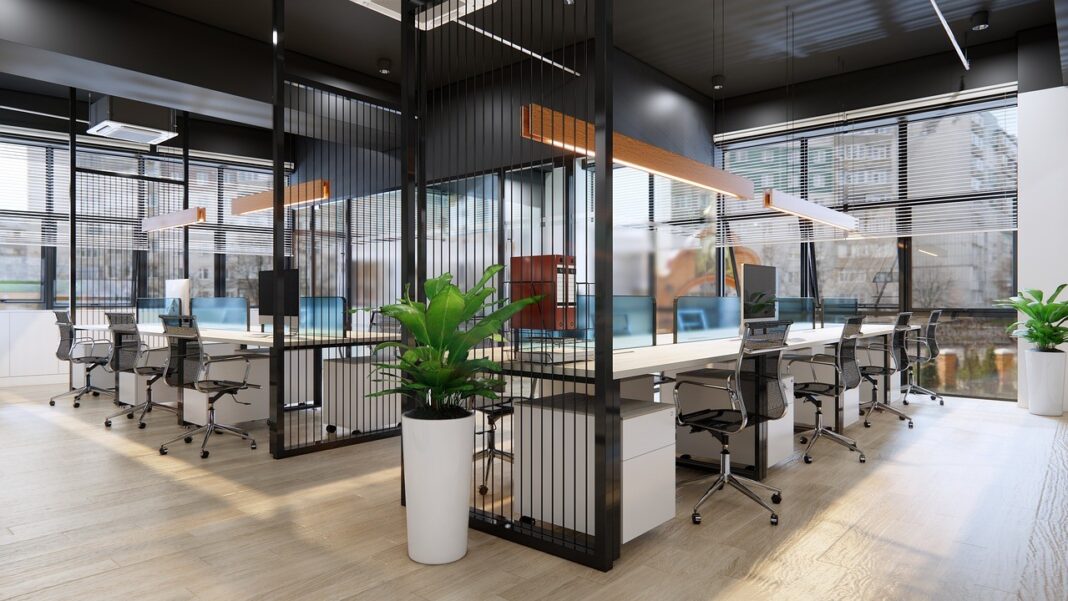Once upon a time, office spaces consisted of rows and rows of cubicles with a few corner offices. Employees were largely confined to their own spaces.
Times have changed. Today, offices are designed to promote collaboration between employees and encourage free movement throughout the space. Employees can choose to work at a traditional desk or find a quiet corner of the office to get work done. Technology is largely to thank for this transformation.
Every company is, however, at a different stage in the process of modernizing their workspace. If you’re currently re-envisioning yours, here are a few ideas.
1. Offer Flexible Work Arrangements
Less than a decade ago, only about 6 percent of white-collar employees reported primarily working from home. As of October 2024, that amount has doubled. And, with an increasing number of employees across industries demanding remote work options, it appears work-from-home arrangements are here to stay.
However, building a strong company culture can be challenging when a workforce is completely remote. There are simply fewer opportunities for co-workers to truly get to know one another. Companies can stake out a middle ground by allowing for flexible work.
Under a flexible work arrangement, employees can work from home, in the office, or at locations near the office, such as a cafe. Employees still get valuable facetime with colleagues, which is critical for building good working relationships while still offering them the flexibility they crave.
If your company decides to use a flexible work model, there are a few factors worth considering, such as:
- How often will employees be required to work in the office?
- Whether employees will have designated workspaces or if it’s first come, first serve.
- If all employees need to work in the office periodically, or only those who live within a certain distance or who work on specific teams.
- Whether the office has the technology needed to promote collaboration between in-office and remote employees.
2. Make Reserving Workspaces Easy
If your company opts to operate under a flexible work arrangement, it’s important to streamline the office experience for employees. Claiming spaces should never be a hassle.
Fortunately, selecting a desk and reserving meeting rooms has never been simpler. Mobile applications such as Envoy, for example, enable employees to indicate when they’re planning to head into the office. Once they’ve done so, they can look at where others are sitting in the office and choose a desk for the day. Administrators can even create sections of the office for different teams.
Office schedulers are also taking the guesswork out of reserving conference rooms. Located outside the doors to offices, these schedulers let employees see when the room is available throughout the day and reserve it during open slots. Many of these devices integrate with calendar applications, like Google Calendars, which makes it possible to reserve a room from anywhere.
3. Equip Your Conference Rooms With Quality AV Technology

Once employees reserve a conference room, they need to feel confident they can lead meetings in these rooms in which both in-person and remote colleagues feel included. Smart investments in conference room AV technology can create this type of inclusive environment.
Every meeting participant, no matter where they’re located, needs to be able to hear what’s being discussed and see the presentation materials shared by the presenter. With that in mind, there are a few must-have devices for every conference room, including:
- Microphone: Whether a ceiling microphone or an all-in-one audio-visual solution, your conference room needs to have quality audio input devices to ensure speakers in the room can be heard by everyone.
- Speakers: You can choose to have speakers installed throughout the room or locate them on the conference tables near where meeting participants are seated.
- Cameras: Conference rooms must have HD cameras capable of recording every person in a conference room at once so everyone feels included.
- Touch panels: It should be simple to switch who is sharing their screen with just a few clicks.
If all of this sounds like a major burden for your IT team, help is available. There are professional service providers capable of handling Google Meet, Microsoft Teams, and Zoom conference room setup for your company.
4. Create an Office Space With Different Work Environments
No one wants to sit in the same place for eight hours every day. Employees want to be able to move around throughout the day and interact with their colleagues.
Technology has made it possible for employees to shift work environments based on their mood as the day goes on. For example, some might prefer to start the day working at their desk but then move to a shared space to work on a team project in the afternoon. If you’re looking to build this type of workspace, be sure to keep the following in mind:
- Make sure WiFi is available throughout the office space. If you discover there are any dead zones, consider investing in wireless extenders.
- As you set up the office space, it’s important to designate areas for specific tasks. For example, you might want to make one section of the office a “quiet area” where employees can get work done without interruption and make a different one a collaborative space with desks employees can share.
- Use a variety of chairs and desks. Some employees may want to escape and sit in a comfy chair to work during the day, while others might prefer to work at a standing desk. Let employees choose whichever one best fits their work style.
Refresh Your Office for a New Start
There’s no better time to plan how to make your office a more welcoming and collaborative environment. Embrace creativity—your office space should reflect the uniqueness of your company and inspire your team year-round!














